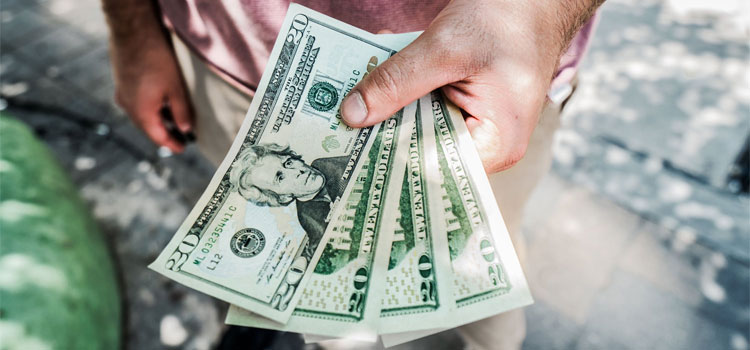Many of us have toyed with the notion of writing a book. Now, thanks to the internet and technological advances, even amateurs can learn how to self-publish a book.
- Inbox Dollars - Get paid to check your email. $5 bonus just for signing up!
- Survey Junkie - The #1 survey site that doesn't suck. Short surveys, high payouts, simply the best.
- Nielsen - Download their app and get paid $50!
Who knows? You might just be the next breakout bestselling author!
Contrary to popular belief, self-publishing a book isn’t exclusive to mediocre
Don’t believe me? Here are some successful works that were self-published:
- “Fifty Shades of Grey” by E.L. James
- ”Switched” by Amanda Hocking
- ”Diary of a Mad Fat Girl” by Stephanie McAfee
- ”No Thanks” by E.E. Cummings
- ”Still Alice” by Lisa Genova
- ”Leaves of Grass” by Walt Whitman
- ”The Celestine Prophecy” by James Redfield
- ”The Martian” by Andy Weir
- ”Eragon” by Christopher Paolini
- ”A Room of One’s Own” by Virginia Woolf
- ”The Wake” by Paul Kingsnorth
- ”Huckleberry Finn” by Mark Twain
- ”Double Persephone” by Margaret Atwood
- ”Spartacus” by Howard Fast
- ”A Naked Singularity” by Sergio De La Pava
- ”Ulysses” by James Joyce
Convinced?
In today’s article, you’ll find a step-by-step guide on how to self-publish a book, the 12 best self-publishing companies for authors, and tips to be a successful self-published author.
2 Major Reasons to Go the Self-Publishing Route
Want to learn more about self-publishing and why it is the better choice than partnering with publishers?
Here are the two best reasons:
1. You can earn more money with self-published books
In traditional publishing, new authors often have no choice but to sign away rights to their book for a certain number of years.
In exchange, the author earns a book advance of about $5K and around 5% to 8% royalties on all book sales.
Bigger publishing companies do this and continue supporting the author with marketing, book tours, promotions, and follow-up possibilities.
Unfortunately, this is rare. Authors usually have to deal with their book’s own marketing and shoulder PR campaigns themselves, which can cost anywhere from $5k to $10k per campaign.
In contrast, a self-publishing author pays for the printing costs upfront. With options like print-on-demand (POD), this isn’t such a burden even for first-time authors.
You may pay as little as a few bucks for each printed book (and far less for an ebook), which in turn allows you to price your book fairly and to keep more money for yourself.
2. You keep 100% of the publishing rights with you
Traditional publishers shoulder the initial costs of your book production but get most of the control over the rights of the book for up to 5 years.
For some unlucky authors who didn’t know better, they may have unknowingly signed away all their rights to their book(s) forever.
The one with a bigger percentage of publishing rights can control many details of the book, including retail price, ebook promotions, potential follow-ups of the book, and so on.
As such, giving away your publishing rights will tie your hands regarding the success/failure of your book.
You simply can’t decide on anything major about the book’s production, promotion, or sales.
Meanwhile, self-publishing your book removes the middleman, leaving you total control of everything: from printing to marketing to the expansion of the book into a series, or adaptation into an ebook or audiobook, maybe even into a film or television series. You never know!
How to Self Publish a Book
The steps to self-publishing a book may be slightly different between personal situations, locations, budgets, and whatnots, but most authors follow either of these two paths:
- Authors become their own publisher – With this route, you’ll be the author and publishing house in one.
- Authors join Self-Publishing Companies – With this route, the author will decide everything from editors, book art, book format, pricing, and then upload the complete book on his/her chosen self-publishing website. As the author, potential buyers buy your book from the website, which then prints the book and ships it straight to the buyer. You then receive royalties of your book at a scheduled payout, or if earnings are allowed to be withdrawn at any time.
For those wishing to be their own publisher, here are the steps you need to take:
How to Self-Publish a Book in 7 Steps
1. Write your book
Of course, we shouldn’t even be discussing self-publishing if you don’t have a book to publish.
No joke. Here are the fastest ways to make easy money online. Click here to see how.
Think long and hard about what you want to write about, think about your target audience, create your manuscript, and proofread it.
If you can, find a few trusted friends who are able to provide honest feedback about your book and have them read your draft. Revise your draft according to your reader feedback.
The next step is to copy edit your book yourself, but you may be too close to your work to be able to effectively and objectively copy edit it. It’s a good idea to hire a freelance copy editor to do this part for you.
2. Design and format your book
When you’re done writing your book, spend considerable time thinking of a book title that will catch your intended audience’s eye and sound good in marketing materials.
Aside from the book title, your book cover is one of the first things that potential readers will look at when shopping around, especially if you’re selling print copies of your book.
If you’re a designer or an artist, you might want to design your book cover yourself, or you can hire a professional.
You’ll also have to format the interior of your book; the fonts, spacing, indentations, illustrations (if any) have to be formatted correctly.
3. Pick a publisher name and incorporate
Once you have a book, you’re ready for the next step, which is to officially be a publisher.
When thinking of your publisher name, take inspiration from big publishing houses like HarperCollins or Random House. Choose a catchy name you’ll be proud of, but don’t use your real name.
Make sure you incorporate your publishing business into an LLC.
This will protect you from potentially losing personal assets if your business is being sued by employees, consultants, freelancers, and even other people your company didn’t hire. Click here for more information on why you should form an LLC.
4. Buy ISBNs in bulk
The International Standard Barcode Number (ISBN) is a 13-digit number that identifies a book as well as different formats of that book (e.g., edition, audiobook, ebook).
Most booksellers and distributors require an ISBN before they will list a book. Libraries also use ISBNs to locate book titles.
It doesn’t make sense to buy a single ISBN, especially if you mean to publish your book in multiple formats and plan to write sequels or follow up versions.
5. Copyright your book
If you want to protect your book from being re-published as someone else’s “original” material, you’ll need to copyright it.
You also can’t sue anybody for copyright infringement of your book unless you first register that book with the US Copyright Office (assuming you live in the U.S.).
6. Print your book
There are many book printers out there and, as a new publisher, you are going to be best served by a printer that is linked to Ingram Content Group, a large, U.S.-based distributor of books, music, and other media.
Currently, Ingram distributes to over 38,000 retailers, libraries, schools in 195 countries.
If you’d rather stick with just one distribution channel such as Amazon, you could print your book through CreateSpace, which is a subsidiary of Amazon.
You can make money from home and it doesn't have to be challenging. Click here to see how.
The main benefit to setting Amazon as an exclusive distributor is that you get a higher profit margin on your book. And because Amazon has no rights to the book, you can switch your distributor at any time.
7. Market your book
Create a website for your publishing company as well as your book(s).
Work the social network circuit and post your business as well as its product(s) on LinkedIn, Facebook, Twitter, etc.
Talk with other small publishers and find out how they are promoting their products and through which channels.
If you’re self-publishing an ebook, you can work with book promotion websites that place your book in front of new readers. There are both free and paid book promotion websites, such as Goodreads and BookBub.
14 Best Self-Publishing Companies
If you choose to self-publish, you will likely work with a self-publisher that will provide you with a set of services including formatting, cover design, copyright registration, distributor listing, etc. in exchange for a set fee.
The cost of printing is fairly even across the board with most self-publishers—or at least it should be—because most self-publishing companies use either an in-house or third-party print-on-demand service provider of their choice.
For those looking to work with the best self-publishing companies, here are your top choices:
1. Kindle Direct Publishing
The most popular of all self-publishing companies simply because it is directly from retail giant Amazon, so your book will be included in the Kindle store.
KDP has its own platform to layout your book if you haven’t done so.
Uploaded books will be reviewed in under 10 minutes, so if your book passes, it can go live on the Amazon marketplace hours after being accepted.
There’s no fee to self-publish with Kindle Direct Publishing, plus you earn 70% of book royalties.
2. Smashwords
Many indie authors feel right at home here, since Smashwords isn’t like traditional publishing companies.
Authors receive up to 80% royalties and receive monthly PayPal payments (with only a penny payment threshold).
It partners with Findaway Voices for audiobook production and distribution.
3. Kobo Writing Life
Kobo (yeah the ebook reader brand) followed the footsteps of Kindle Direct Publishing with its own Kobo Writing Life service.
There does seem to be a huge difference.
Kobo lets authors keep their downloaded ePub file after the conversion, which means you’d be able to share a digital copy of your book with your friends and family instead of asking them to pay.
Authors keep 70% of royalties as long as your ebook is priced more than $2.99, but you are in control of prices and promotions.
You also own the rights to your books completely and you’re allowed to publish elsewhere too.
4. Blurb
Although this UK-based company became famous for printing photography books, Blurb also has a platform for authors to lay out their work, promote and distribute the books through its own Blurb store, Amazon, Ingram, and other self-publishing sites.
5. Outskirts Press
Probably one of the lowest rates in the self-publishing industry, Outskirts Press has been a favorite among authors for years now.
This Colorado-based company makes it homey for authors, giving out prizes to “Best Book of the Year” with a $1,500 price annually, promoting books day in day out, and millions of dollars in royalties since it launched in 2002.
6. Lulu
This site offers pretty much the same self-publishing options as the rest of this list, but they’ve been known to have superb editorial and marketing add-on services.
7. Xlibris
Known for professional customer support and an easy-to-use interface, Xlibris gives its authors royalties ranging from 10% to 50%, depending on factors such as when you joined Xlibris, type of book (printed vs. digital), and so on.
Xlibris is popular for its author events, which definitely provide a much-needed push, especially for new authors.
8. BookBaby
Don’t be fooled by the cuteness of its name.
This company provides a complete self-publishing experience (if you need to) and mix-and-match self-publishing services if you just need help with printing, or distribution, or ebook conversion, and so on.
9. Barnes & Noble Press
Barnes & Noble has a pretty strong ebook sales record, even if it doesn’t go outside the United States.
This company is a solid publishing house with a massive collection of books, so it is definitely worthy of a spot while you’re considering which of the best self-publishing companies to go for.
10. IngramSpark
Ingram Book Company is the largest distributor and wholesaler of books in the US.
It is also one of the best self-publishing companies around the world with its 50+ years of history in the field.
11. Draft2Digital
Like the other services on its list, Draft2Digital offers complete self-publishing services, from formatting, publishing, marketing, and tracking sales of your book.
With its user-friendly interface and excellent customer service, Draft2Digital is one of the most trusted self-publishing platforms for up and coming authors.
12. PublishDrive
PublishDrive is one of the newest companies on this list, but it works with both local and international publishers, opening up your ebook to millions of potential readers.
Also, once you’re an established author and making plenty of money, you have the option of paying $100 a month in exchange for keeping 100% of your royalties.
13. Apple Books
Apple sells the majority of the world’s ebooks, after Amazon of course.
As an author, you can join Apple Books as an author and sell your ebook and audiobook.
14. Google Play Book Partner Center
Of course, if you’re taking on Apple, make sure you cover the Android crowd as well.
How much money can you earn from a self-published book?
For every book sold, the self-publisher and you will split the profit- also known as the royalty- in some way.
Hopefully, the split is at least 50/50. There is also the book printing cost to consider, as well as any discount rates offered by a retailer like Amazon.
In the end, your profit margin might look like this:
- Retail price of your book ($14.95) – printing cost ($5.00) – discount rate ($2) = profit ($7.95)
- profit x (0.50 publisher royalty) = $3.98 royalty for you, $3.98 royalty for self-publisher
- A hypothetical $3.98 from a book that costs $14.95 is not very much profit for you; however, this is at least a healthy 26.5% royalty. By comparison, consider how traditional publishers often give authors only a 5-8% royalty, meaning a profit of just $0.74 – $1.20 per book sold.
However, even if a self-publisher states that it takes only 50% of the profit, there are ways that it can pad its bottom line.
That padding is typically done by pumping up printing costs.
As a result, it’s imperative that you know the expected price of printing a book.
7 Must-Follow Tips on Self-Publishing a Book
Want to know how to self publish a book successfully?
The answer all boils down to marketing.
Here are 7 book marketing tips you can do, even without experience or tons of funds:
1. Learn about your target audience
When you’re writing a book, the aim shouldn’t be to sell to everyone.
Find your niche; that is, the topics that you know you can confidently write about and certain people will value.
Get to know who your target audience is: a group of people who will find your book valuable and useful.
Think about problems you can help solve, or who will be interested in your expertise.
2. Brainstorm heavily for your title and cover
I know I’ve mentioned it, but I can’t stress it enough: First impressions last.
Your book title and book cover should be interesting, professional, and invoke something in the reader that grabs their attention.
Another important thing to remember is that your book cover should be able to convey what your book is about, or at least its tone.
For instance, serious nonfiction books should have more somber color tones and images, such as a gray or dark blue palette. Holiday-themed books may have red and green, while young adult books may have bright colors.
3. Pick the right author bio and picture
This is particularly important for new authors since your author bio introduces you to the world.
Remember that your bio is there so that readers can get a bit more of a feel for who you are because they are not just buying a story or a self-help book; they’re investing in a person: you.
In the same vein, you have to pick your author photo carefully as well.
4. Prepare your synopsis
Your synopsis will affect sales quite dramatically.
If the synopsis makes the story sound dull or the contents sound uninspiring then the potential purchaser will move onto the next one.
Consider the synopsis to be your initial sales pitch: it has to grab the user, based on the genre and suck them in.
5. Join or build a community
Self-published authors are generally lone writers, and marketing your book is hard work.
It might then be worthwhile to join a “tribe” (I recommend Self-Publishing School) of your fellow authors to help spread the load a bit.
This can be as little as just chatting with people online to share tips and advice, or you could go a similar route as Discover Sci-Fi. This group is a bunch of Sci-Fi authors who have self-published on Amazon and have banded together to help promote each other’s books and sales.
This method allows for a greater reach, especially if each author promotes the group to their own audience.
If done correctly, it becomes a win-win situation: authors gain a wider reach and readers gain access to unknown authors and read something new.
6. Maintain a website and build a mailing list
There are zero excuses for an author to not have a website.
A website is a focal point for the author to sell or presell books, as well as a way for your readers to gain better insight into your mind.
A website can be as basic as a single page with a blurb and link to buy your book on booksellers like Amazon. Or it can be more fleshed out, with a blog, About page, Contact page, Media page, and other useful information.
From a marketing point of view, a site with a blog is an absolute minimum.
A blog allows you to gain SEO advantages and also to give a glimpse into your life, connect with your readership, promote sales events, announce new book releases, and update your audience with what’s going on with you.
While you’re at it, consider building a mailing list. This is where you’d be sending freebies, news about your books, and other ways of promoting your book.
Make it count.
7. Make your online presence felt
There are so many social networks out there that using social media as a method of marketing can be daunting.
My advice here is to pick one or two (say Twitter and Facebook) and focus exclusively on them.
Social media should be considered as a way to promote you as an author rather than a specific book. That’s not to say that you can’t let your followers know about your books and any offers etc. but it should not be the main focus.
Use these networks instead to connect with people, discuss topics in your preferred genre, and to give shoutouts for other authors and books that you respect or enjoy.
How To Self-Publish A Book Successfully
I hope this comprehensive guide helps you self publish a book successfully.
Know that book publishing is both a personal and professional decision that is not undertaken lightly.
There is a ton of work involved in just completing the manuscript, then having it ripped up (I mean, edited), and finally in promoting the book.
But for some professionals, publishing a book helps promote their careers and give them legitimacy. For others, being a self-published author becomes their career.
Maybe a book is a chance to leave some kind of legacy. And for still others, a book can be the key to eventual fame and fortune.
Planning to self-publish a book soon? What’s it about? Share it with us in the comments!





